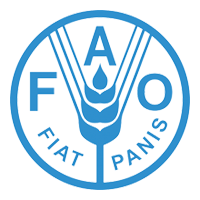Practical Guide to Capacity Development in a Sector Context
This Practical Guide to Capacity Development in a Sector Context has been compiled to accompany Asian Development Bank (ADB)’s Capacity Development Framework and Action Plan.1 Its purpose is to provide ADB staff and other development practitioners with a set of tools and instruments that can be used to guide capacity development processes. The range of tools and instruments compiled in this guide starts from a sector-wide perspective (political economy and governance features) then moves down to capture individual stakeholders’ perspective. This guide also includes tips for change management and reform processes. The use of the guide and the tools in the country partnership strategy (CPS) preparation process and other ADB business processes is explained in the overview section. The tools are intended for use in governments’ diagnostics and analytical work; pre-CPS analysis and assessments; and economic, thematic, and sector work (ETSW). The outputs are intended to feed into sector diagnostics and subsequent sector road maps. The tools in this guide have to be used selectively based on sound judgment—they are not intended to be applied sequentially in a short and compressed period of time. The dynamics of a country-led dialogue, analysis, and formulation process related to capacity development must guide the use of the instruments. As a complement to ADB’s Capacity Development Framework and Action Plan, this guide includes tools and instruments developed by other organizations.
Related Resources
The Capacity Development Results Framework
The Capacity Development Results Framework (CDRF or the Framework) is a powerful new approach to the design, implementation, monitoring, management, and evaluation of development programs. Originally conceived to address well-documented problems in the narrow field of capacity development, the Framework...
Critical issues for reflection when designing and implementing Research for Development in Innovation Platforms
This project report from Wageningen UR (as a contribution to the CGIAR Humid Tropics research program) examines ‘critical issues for reflection when designing and implementing research for development in innovation platforms.’

Rethinking the benchmarking of agricultural and rural innovation
The purpose of this paper is to re-examine the role that benchmarking can play in rural and agricultural innovations. Although generally known as 'traditional sector', rural activities are far from static but rather driven by old and new challenges pleading...

New Pathways to Innovation: Creating conditions in which West African smallholders can capture opportunity
The Convergence of Sciences programme has spent the past decade exploring new pathways for agricultural innovation that focus on enabling smallholders to capture opportunity. Its approach relies on bringing together different actors who can achieve major change in an agriculture...
Innovation and Growth: Rationale for an Innovation Strategy
This report discusses general innovation issues and how they are affecting economic growth. It emphasizes how the advances in ICT, biotechnology and other fields of science are changing the innovation landscape and what are the implications for CD.


